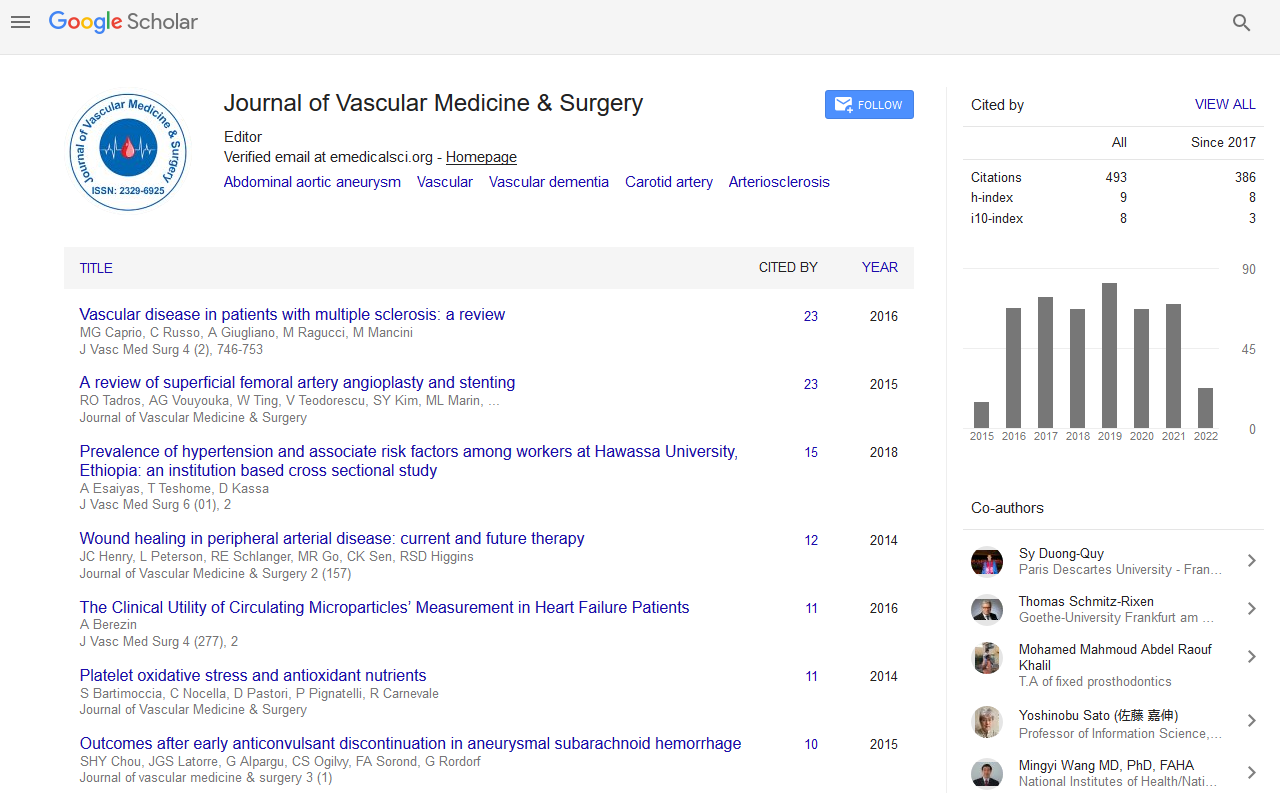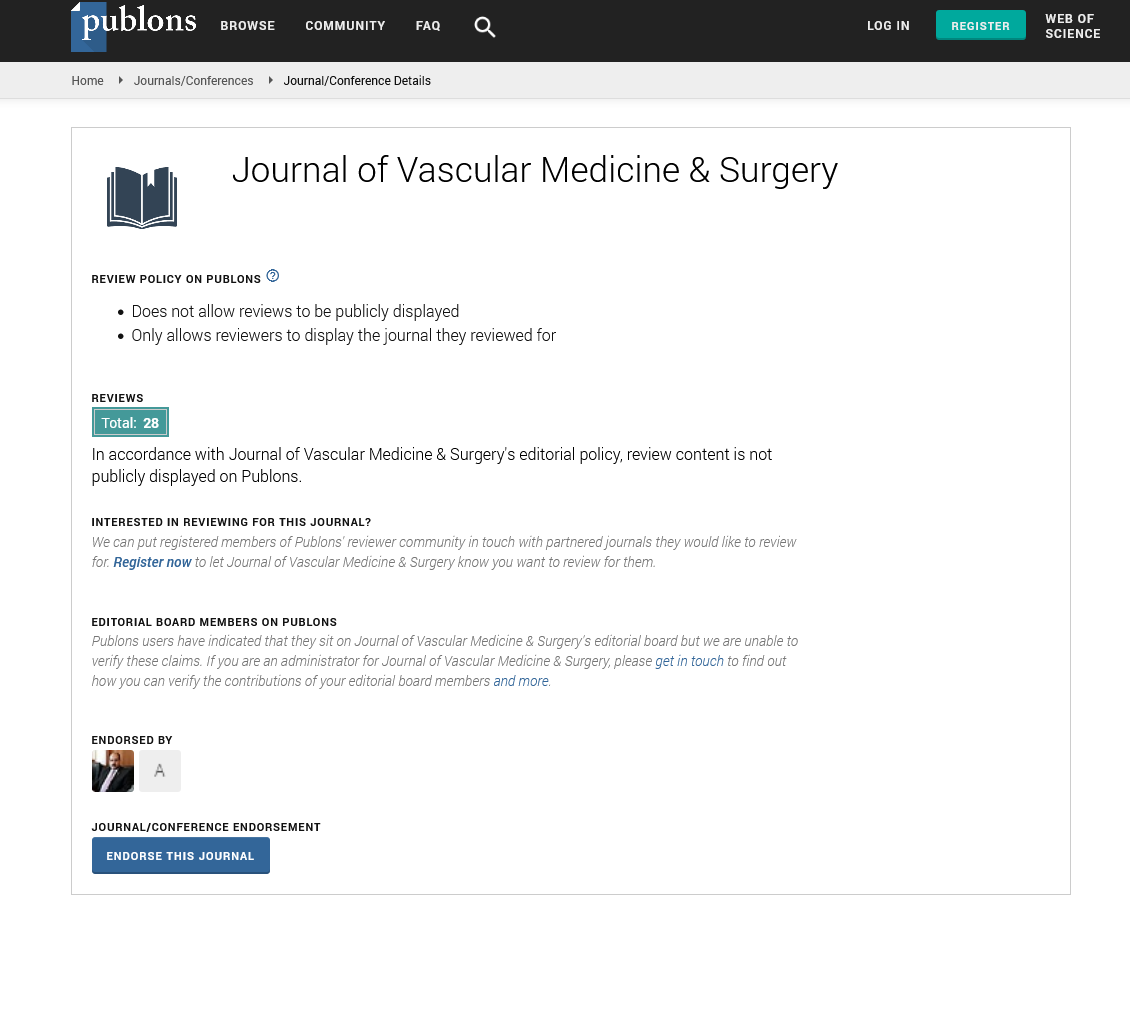Indexed In
- Open J Gate
- Academic Keys
- RefSeek
- Hamdard University
- EBSCO A-Z
- OCLC- WorldCat
- Publons
- Euro Pub
- Google Scholar
Useful Links
Share This Page
Journal Flyer

Open Access Journals
- Agri and Aquaculture
- Biochemistry
- Bioinformatics & Systems Biology
- Business & Management
- Chemistry
- Clinical Sciences
- Engineering
- Food & Nutrition
- General Science
- Genetics & Molecular Biology
- Immunology & Microbiology
- Medical Sciences
- Neuroscience & Psychology
- Nursing & Health Care
- Pharmaceutical Sciences
Abstract
Neurovascular Compression Syndrome after Coiling Intracranial Aneurysm
Roland Backhaus, Kremmler L, Kirzinger L, Wendl C and Schlachetzki F
Objectives: Endovascular treatment of intracranial aneurysms using detachable coils is an established method by interventional radiologists. Next to prevention of subarachnoidal hemorrhage, prospective and retrospective studies have shown relief of symptoms caused by the mass effect of the aneurysm following this treatment. Patients and methods: We present cases of endovascular treated intracranial aneurysms in patients developing focal neurological symptoms due to a local perianeurysmal inflammation. Furthermore, we review the literature to increase awareness of this complication, its pathophysiology and therapeutic options. Results: Only rare cases of local perianeurysmal inflammation have been reported in literature. Clinical symptoms are heterogenous, up to focal seizures or symptoms of acute hydrozephalus. Pathophysiological, thrombembolism, local inflammatory and mass are possible aetiological factors. However, overall long-term prognosis is good. Conclusion: Neurovascular compression syndrome after intracraniel aneurysm coiling is a rare and possibly delayed complication. With regard to various causes, diagnostic and therapeutic options should be considered.


